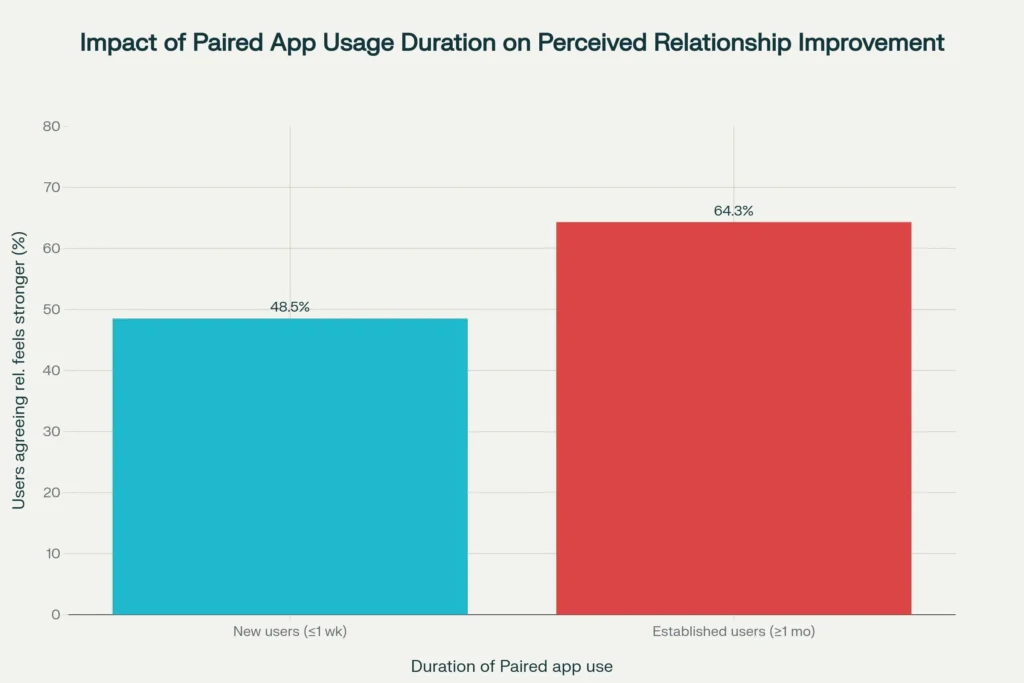Digital Conflict Resolution: Key Insights
Evidence-based strategies for repairing relationships in the digital age
The 60% Threshold: Accepting Repair Texts
Six-year longitudinal study data showing relationship between repair acceptance and divorce risk
💡 Key Finding: Accepting at least 60% of repair texts predicts less than 10% divorce risk over six years
What Works vs What Fails in Digital Repair
Research-backed effectiveness of different text-based conflict resolution strategies
✓ What Works
I-language with perspective (r = 0.72), validation (65% reduction in negative affect), and planned pauses (50% less escalation)
✗ What Fails
Non-apologies increase resentment in 70% of cases, and message overload correlates with lower relationship quality
Hover over data points for detailed insights • Toggle between charts using the buttons above
The shift from in-person conversations to screens has created new ways to damage and repair relationships. Research now tracks how couples handle conflict through texts, video calls, and apps.
Why Digital Fights Hurt More
- Missing signals: Only 7 percent of meaning is in the words. Tone, facial expressions, and body language are lost in text.
- Phubbing: Ignoring your partner for a device raises conflict and reduces satisfaction. Across 52 studies, correlation is around -0.30.
- Fexting delays: Ninety percent of people expect a reply to a conflict-related message within 30 minutes. Waiting increases anxiety and makes things worse.
What Works in Text-Based Repairs
Data: Accepting at least 60 percent of repair texts predicts under 10 percent divorce risk over six years.
What helps:
- I-language with perspective: “I’m tense, your view makes sense” lowers defensiveness (r = 0.72)
- Validation: “That must feel awful” reduces negative affect by 65 percent
- Planned pauses: A 10-minute break from texting cuts cortisol synchrony by 22 percent and drops escalation risk by half
What fails:
- Non-apologies: “Sorry you’re upset” increases resentment in 70 percent of recipients
- Message overload: Especially from men, heavy texting during conflict links with lower relationship quality
Video Therapy Works as Well as In-Person
Findings: No difference in outcomes between video and face-to-face therapy for satisfaction, communication, or mental health.
Client data (n = 1,157): Equal gains, but in-person sessions form therapist alliances twice as fast.
What makes video work:
- Platforms like OurRelationship double success when guided by a coach
- Clear rules like keeping the camera on and no multitasking reduce digital disengagement
Do Relationship Apps Help?
Meta-analysis: Seven tested apps show small to moderate gains (effect size d = 0.30 to 0.45)
Paired app study (n = 745):
- 35.5 percent increase in MQoRS scores after three months
- 64 percent of users reported a stronger relationship
Why it helps: Daily quizzes spark micro-disclosures, which lead to offline conversations and habit change

Long-Distance vs Local Couples
- Long-distance: Responsive texting boosts satisfaction
- Local couples: Phone calls matter more; texting alone isn’t enough
Guidelines for Digital Conflict Repair
- Move serious issues from text to video or face-to-face quickly
- Signal safety early. A simple “I need a break, love you” avoids anxiety spikes
- Use pre-agreed phrases like “R-code 1” to call time-out
- Set phone-free zones. Reducing phubbing improves intimacy (β = 0.31)
- Use tested apps and video if in-person help isn’t accessible
When Digital Tools Aren’t Safe
Avoid digital repair methods if:
- There is physical or psychological abuse
- One or both partners have untreated addiction
- Technology is used for control or surveillance
In these cases, stop digital contact and seek professional help
What We Still Don’t Know
- Can AI chatbots help with repair without invading privacy?
- Do attachment styles change how people respond to emoji-based validation?
- What features keep lower-income couples engaged with apps beyond the early drop-off period?
Conclusion
Digital conflict is unavoidable. Knowing how to repair over screens is now a relationship survival skill. With the right tools and phrases, couples can use technology to connect instead of fracture.



